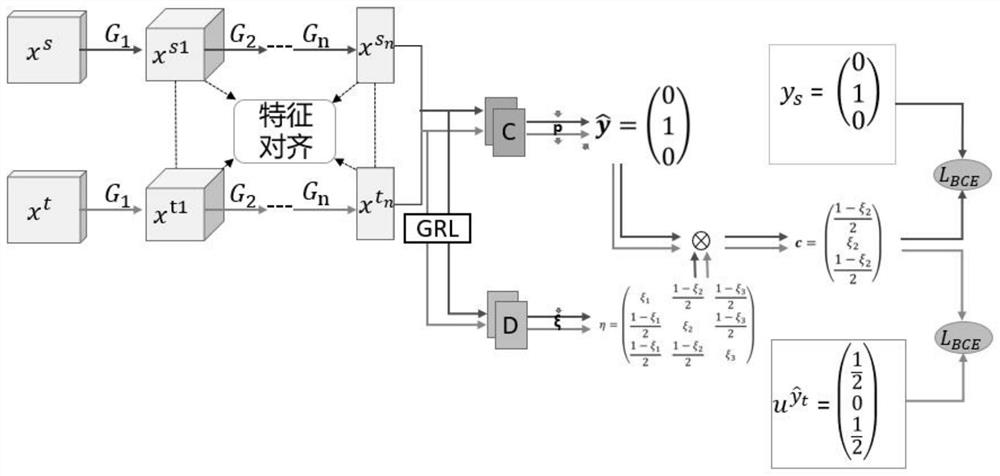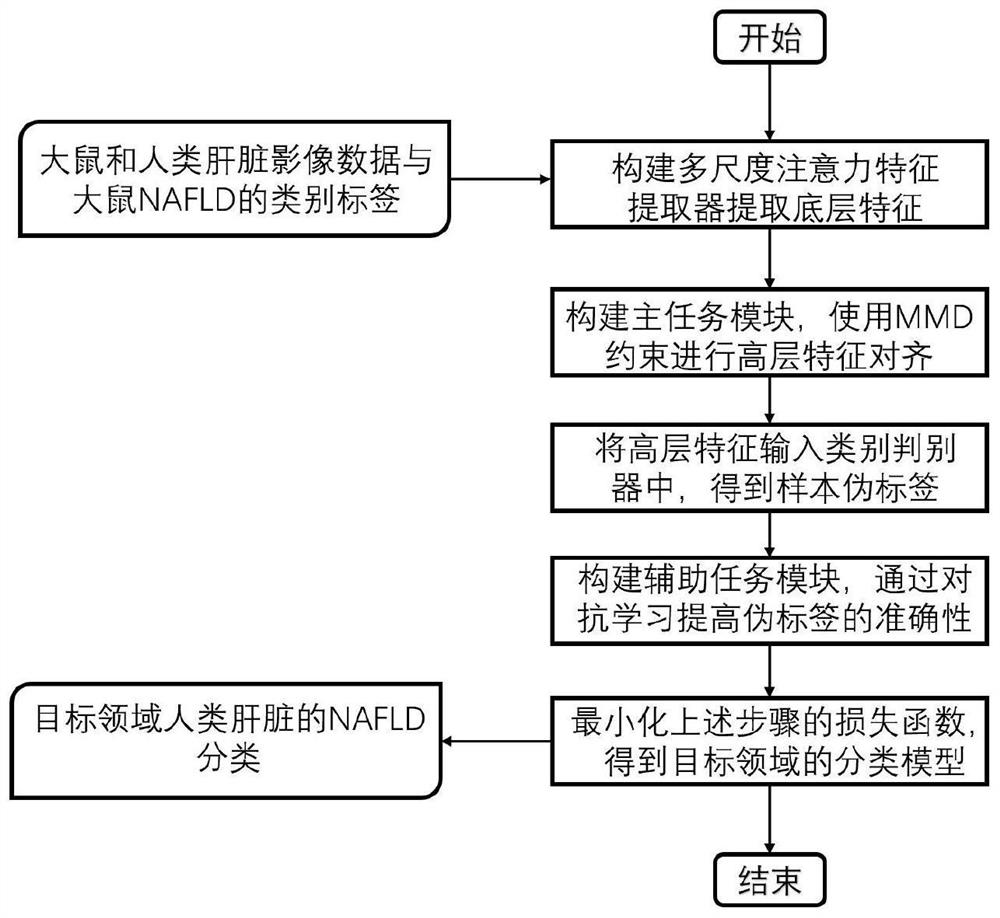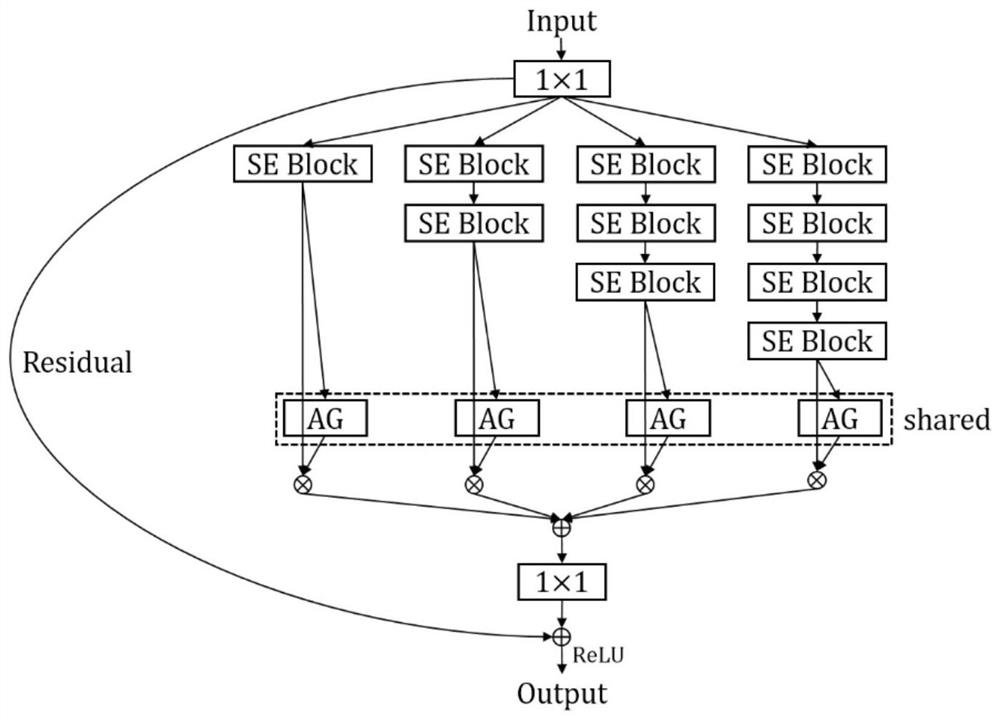Cross-species medical image classification method based on domain self-adaption
A technology of medical imaging and classification methods, applied in the field of computer vision, can solve the problems of inability to extract effective features, and the different sizes of images of rats and humans.
- Summary
- Abstract
- Description
- Claims
- Application Information
AI Technical Summary
Problems solved by technology
Method used
Image
Examples
Embodiment Construction
[0019] The present invention will be described in further detail below in conjunction with specific embodiments and with reference to the accompanying drawings.
[0020] The method model structure of the present invention is as figure 1 As shown, the flow chart of the method is as figure 2 shown, including the following steps:
[0021] Step 1. Expand the data, including clockwise rotation, random up-down flip, random left-right flip, diagonal transposition, and sub-diagonal transposition to increase the total amount of data. After random oversampling and gray level equalization The data of is stored in the form of a matrix, which is used as the input of the network model.
[0022] Step 2, using the multi-scale feature extraction module to extract the low-level features of the sample.
[0023] In step 2.1, the samples of the source domain and the target domain are input into the convolutional neural network SE-Net based on channel attention, and the low-level features of th...
PUM
 Login to View More
Login to View More Abstract
Description
Claims
Application Information
 Login to View More
Login to View More - R&D
- Intellectual Property
- Life Sciences
- Materials
- Tech Scout
- Unparalleled Data Quality
- Higher Quality Content
- 60% Fewer Hallucinations
Browse by: Latest US Patents, China's latest patents, Technical Efficacy Thesaurus, Application Domain, Technology Topic, Popular Technical Reports.
© 2025 PatSnap. All rights reserved.Legal|Privacy policy|Modern Slavery Act Transparency Statement|Sitemap|About US| Contact US: help@patsnap.com



